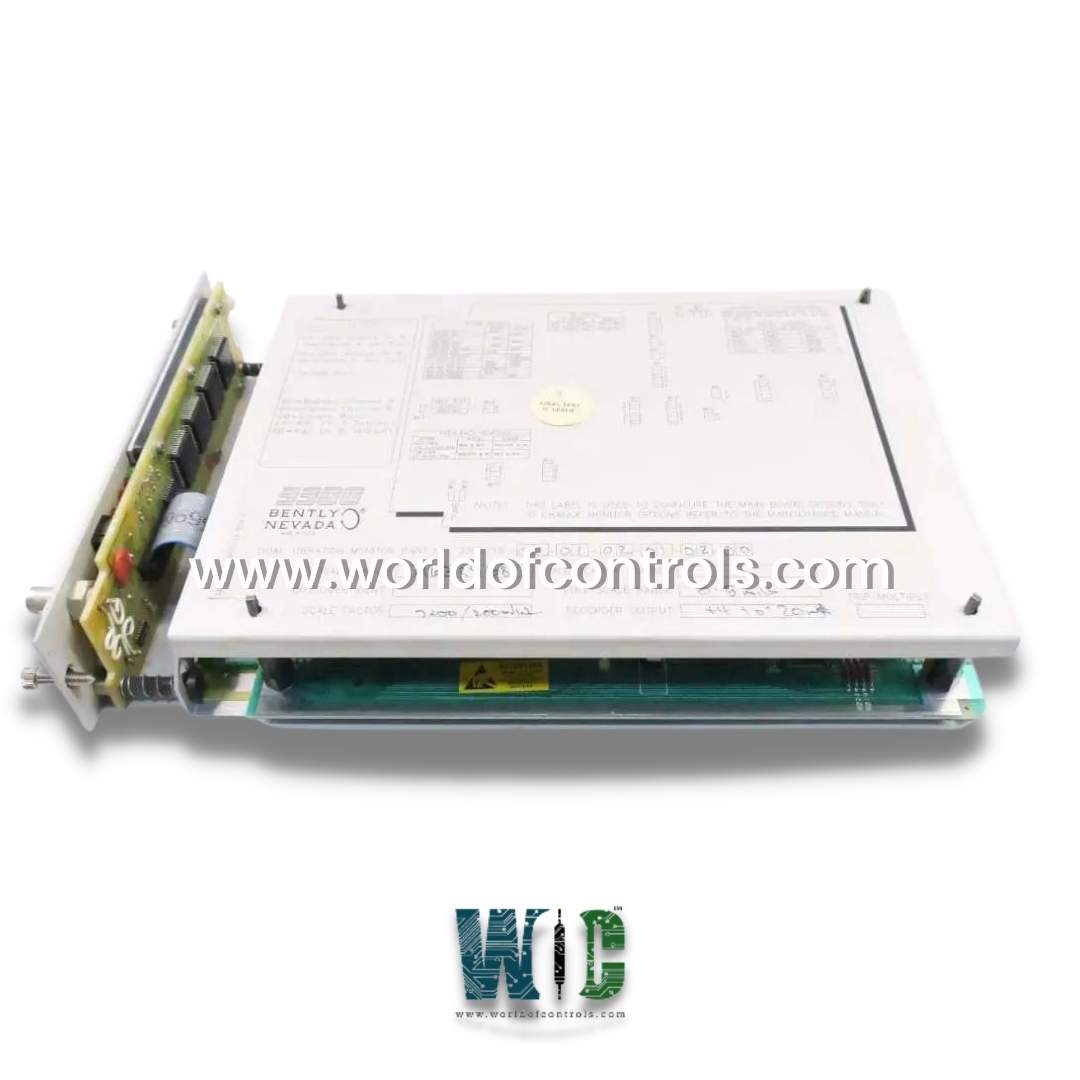
World Of Controls understands the criticality of your requirement and works towards reducing the lead time as much as possible.
78392-01 - Dual Vibration Monitor is available in stock which ships the same day.
78392-01 - Dual Vibration Monitor comes in UNUSED as well as REBUILT condition.
To avail our best deals for 78392-01 - Dual Vibration Monitor, contact us and we will get back to you within 24 hours.
SPECIFICATIONS:
Part Number: 78392-01
Manufacturer: Bently Nevada
Series: 3300/15
Product Type: Dual Vibration Monitor
Input Impedance: 10 k Ohm
Sensitivity: 100 mV/mil (4 V/mm)
Power Consumption: 2 watts
Signal Conditioning Accuracy: ±1% maximum
Output Impedance (voltage outputs): 100 Ohm
Voltage Compliance (current outputs): 0 to +12 Vdc
Gap Alarm Time Delay: 6 seconds
Operating Temperature: 0°C to +65°C
Power Supply Voltage: 125 V dc
Technology: Surface Mount
Size : 83 mm
Repair: 3-7 Day
Availability: In Stock
Weight: 1 Kg
Country of Origin: United States
FUNCTIONAL DESCRIPTION:
78392-01 is a Dual Vibration Monitor manufactured and designed by Bently Nevada as part of the 3300/15 Series used to control the machinery condition monitoring system. The 3300/16 XY/Gap Dual Vibration Monitor continuously measures and monitors two independent channels of radial vibration, and average shaft position (gap), accepting inputs from two proximity probe/proximity systems. This monitor is designed to supersede the 3300/15 Dual Radial Vibration Monitor, which does not provide radial position gap alarms. The 1 to 600 Hz (60 to 36,000 cpm) option is not recommended for machine applications with rapid startup and coast-down rates where acceleration /deceleration exceeds 1000 rpm/s. Because of the extended low-frequency range to 60 cpm, the monitor circuitry will retain vibration transients normally experienced during fast startups (such as with motor-driven equipment).
This can hold vibration levels above alarm setpoints beyond alarm time delays. This may result in Danger relay actuation after the internal time delay has lapsed, even if actual vibration has decreased below the Danger alarm setpoint level. If the standard 4 Hz (240 cpm) low-frequency limit is unsatisfactory for your application, contact your sales professional. The 1 Hz (60 cpm) option is recommended for applications where the shaft rotative speed is less than 1,000 rpm.
TRANSDUCER SUPPLY VOLTAGE:
User-programmable in Power Supply for -24 Vdc, or -18 Vdc, current limited on individual monitor circuit board. Non-multiplexing vertical bar graph type Liquid Crystal Display (LCD). Individual 63 segment LCD per channel. Probe Gap indicated on a third, center scale. LCD also displays error codes and monitors ADJUST mode. One constant ON green LED per channel indicates the OK condition of the monitor, transducers, and field wiring. Constant OFF indicates NOT OK condition or Channel Bypassed (red Bypass LED will be ON). OK LED flashing at 1 Hz indicates the channel has been NOT OK, but is now OK. OK, LED flashing at 5 Hz indicates error code(s) stored in memory.
MONITOR FUNCTIONS:
WOC maintains the Largest Inventory of Replacement Parts for Bently Nevada Monitoring systems. Additionally, we offer warranty-backed unused and rebuilt boards and board repairs for damaged ones. Our team of professionals is available around the clock for your OEM needs. We at WOC are happy to help you with any automation needs you may have. Please contact our team by phone or email for pricing and availability on any components and repairs.
What parameters does a Dual Vibration Monitor measure?
It measures acceleration (g or m/s), velocity (mm/s or in/s), displacement (µm or mils), and frequency (Hz or CPM). These parameters help in diagnosing different types of mechanical issues.
What types of sensors are compatible with a Dual Vibration Monitor?
It supports accelerometers for high-frequency faults, velocity sensors for general vibration monitoring, and proximity probes for shaft displacement measurement in rotating equipment.
What communication protocols are supported?
It supports 4-20mA output for PLC integration, RS485 (Modbus RTU) for remote monitoring and Ethernet (Modbus TCP/IP, OPC UA) for cloud-based diagnostics. Relay outputs can trigger alarms or shutdowns.